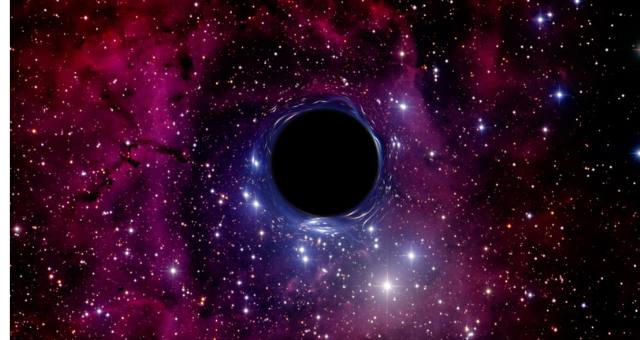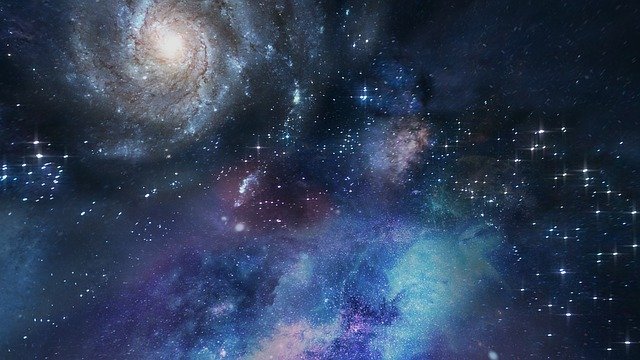*This post may contain affiliate links. This means we may make a commission if you purchase an item using one of our links*
The differences between black holes and dark matter is that black holes are formed after the death of a supermassive, resulting in a supernova explosion and their creation whereas dark matter is matter that we cannot see but makes up 27% of the Universe and works to slow down the expansion of the universe.
For a more detailed look at the similarities and differences between the two along with how each of these entities function within our universe, continue reading as it will be covered more thoroughly below.
What Is A Black Hole?
Table of Contents

Black holes are areas of space where gravity is so strong that not even light can escape them. The reason for this immense gravitational pull is that a large amount of mass is squeezed into a tiny volume. And these mysterious entities fascinate people because they challenge our ideas of time and space.
When a massive star (one that has at least eight times the mass of our Sun) runs out of fuel, it begins to die; at this stage, the star collapses in on itself, creating a concentrated area of mass known as a stellar black hole.
Not all stars become black holes; some expand into red giants. But for those that are large enough, the core begins to collapse. First, the innermost layers are pulled into the center, followed by the outer layers. But after the initial collapse of the outer layers, they bounce back out into space as a supernova explosion.
At this stage, all that remains is the core. If this compact center possesses three solar masses or more, it can continue compacting to smaller and denser volumes. As this happens, gravity and escape velocity increase until the core becomes a black hole.
Escape velocity is the minimum speed an object must travel to escape the gravitational field of a planet or other body. The escape velocity of Earth is 11.2km/s – or 40,000 km/h – which sounds like a lot but is nothing compared to a black hole. Here, even light traveling at over one billion kilometers per hour cannot escape!
Not all black holes are stellar black holes; the most giant black holes in existence are called supermassive black holes and possess masses that equal more than 100 times that of the Sun. Scientists believe every galaxy has one of these black holes at its center, which likely formed during the initial phases of the big bang.
Because black holes suck in all matter, including light, they are entirely invisible. But, scientists can observe them by monitoring the effects of gravity on the stars and gas around the hole.
What Is The Dark Matter?

Dark matter is a form of matter which we cannot see, but it can be detected through its gravitational effects on visible matter. This type of matter makes up around 27% of the Universe, which is still a mystery. When it comes to dark matter, it’s easier for us to categorize what it isn’t rather than what it is.
We know that dark matter is not a simple collection of clouds that lack stars; if it were, it would emit detectable particles. We can also determine that dark matter is not antimatter because the latter produces gamma rays when it interacts with “normal particles.”
In addition, we can differentiate dark matter from black holes because black holes are incredibly compact or concentrated, whereas dark matter is scattered through space.
Thanks to dark matter. In a Universe without dark matter, the stars would be spread further apart, and the lack of gravity would prevent galaxies from forming; galaxies exist; the visible matter within the Universe doesn’t possess enough gravity to hold these structures together.
Theories about what dark matter might be range from particles to strings to something else entirely. The only way to determine the truth is through observation and experimentation – which is currently limited. Still, we can make observations of this matter by watching how light behaves around it. If there is a large enough concentration of dark matter, it will bend oncoming light waves around the outside of its mass.
One possibility is that dark matter contains exotic particles (such as gravitinos or weakly interacting massive particles) that interact with matter and light differently than we would expect. But, so far, the only thing we can say for sure is that something exists beyond visible matter; there is a lot of that something, and it interacts with gravity.
Are Black Holes Made Of Dark Matter?
Just because black holes are the darkest known entity in our solar system, besides the theorized primordial black holes that may have been formed from dark matter, all modern black holes will be formed from normal matter.
After all, black holes are formed form the destruction of a super massive star, which in and of itself is composed of a variety of phyiscal elements such as hydrogen and helium, while dark matter makes up 27% of everything surrounding us and is scattered across the entire cosmos.
Furthermore, black holes are amongst the most densely packed entities in our entire universe, which is very functionally different from how dark matter is observed to function, acting far more loose in its composition activity across space time.
Differences Between Black Holes And Dark Matter
As for the differences between the two, they include the below:
- Black holes are formed form the destruction of either a supermassive star or when a pulsar reaches the necessary mass to explode and become a stellar mass black hole while dark matter has no exact origin point based on our knowledge at this moment in time.
- Dark matter slows down the expansion of the universe while black holes tend to bring objects closer and consume anything that enters their vicinity.
- Black holes vary in size form the supermassive ones at the center of galaxies to the smaller ones scattered within the galaxies whereas dark matter is simply present everywhere in comparison and doesn’t seriously affect solid matter like planets, stars, moons to the same level as a black hole would.
- Black holes are the densest known entities in the universe.
- Black holes can warp space and time around them due to their unfathomable density.
Summary
Although some may assume that dark matter is what makes up black holes, due to the fact black holes are amongst the darkest known entities in the universe, the reality is black holes are in fact made from normal matter, which would happen to be via a supernova explosion.
Furthermore, one is responsible for how the entire universe functions while the other is very powerful but still miniscule in the effect it has on the entire cosmos as we know it.

